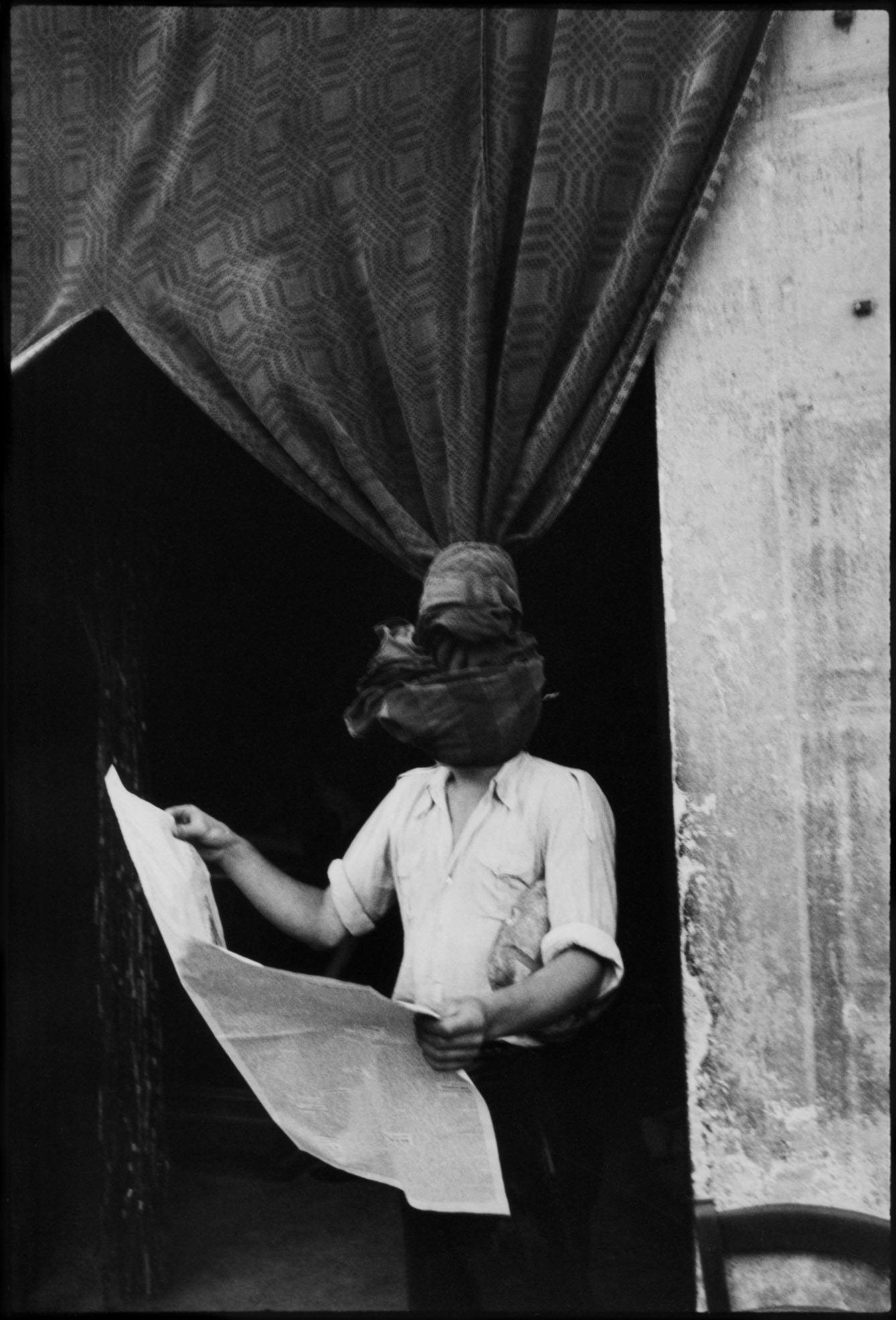Henri Cartier Bresson
photojournalism

EN – Henri Cartier-Bresson (August 22, 1908 – August 3, 2004) was a French photographer considered to be the father of photojournalism. He was the master of candid photography and an early user of 35 mm film.
He helped develop the street photography or life reportage style, and coined the term, The Decisive Moment, that has inspired generations of photographers ever since.

Born in Chateloup, a few miles from Paris, in 1908 from an upper class family, Henri leaves the high school to devote himself to painting, studying with André Lhote. In this period he attended the surrealists, absorbing the teachings.
Purchased a Leica, flexible and easy to handle, Bresson goes away traveling to Europe and Mexico in the company of Andre de Pieyre Mandiargue.

By means of a gaze trained from painting, attracted by the diverse reality he meets, Bresson highlights the power of a photographer to create his work. In these years, approaches the cinema, he studies cinematography by Paul Strand in New York and returned to France, where in 1931 he became the assistant of French director Jean Renoir.

ITALY. 1933.
Tuscany. Florence.
In 1934, Bresson knows David Szymin, a Polish photographer and intellectual, who later change its name to David Seymour and shortly after a Hungarian photographer, Endré Friedmann, which will be remembered by the name of Robert Capa.
During the Second World War is captured and sent to a prison camp in Germany, escapes and returns to Paris where he collaborated with the French Resistance.

After the war, he returns to cinema and directs the film Le Retour, a documentary on the repatriation of prisoners of war and deportees.
In 1947 he founded, together with Robert Capa, George Rodger, David Seymour and William Vandivert the famous Magnum Agency.
The different souls of Magnum inaugurate a new way of thinking about photography, a micro world where the photographer is the owner of the photographs done, decides what to photograph and where. Cartier Bresson chooses the East since 1948 and travels in India, China, Indonesia, Burma and Japan.

ITALY. Tuscany. Livorno. 1933.
Then in Europe and even in the USA and Mexico. Since 1968, Henri Cartier-Bresson gradually begins to reduce its photographic activity, with the sole exception of the portraits, to devote himself to his first love art: painting. In 2000, together with his wife Martine Franck and daughter Mélanie creates the Foundation Henri Cartier-Bresson, which has as main purpose the collection of his works and the creation of an exhibition space open to other artists.
He died in Céreste (Alpes-de-Haute-Provence, France) August 3, 2004, quietly and without fanfare, at the age of 95 years. Leaves us the gift of a collection of moments, immortalized and made eternal art.
Henri Cartier-Bresson : l’occhio, la mente e il cuore.

